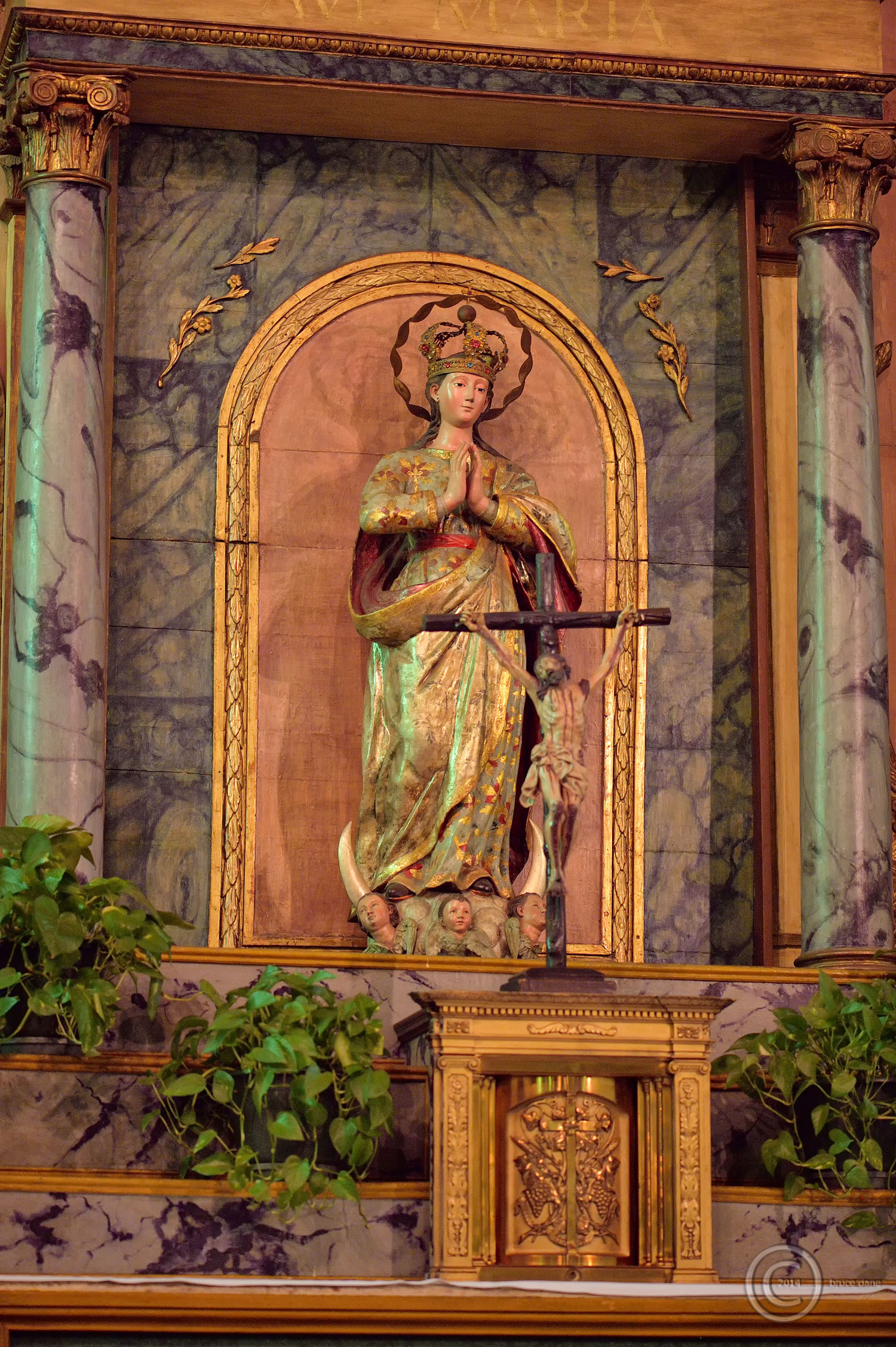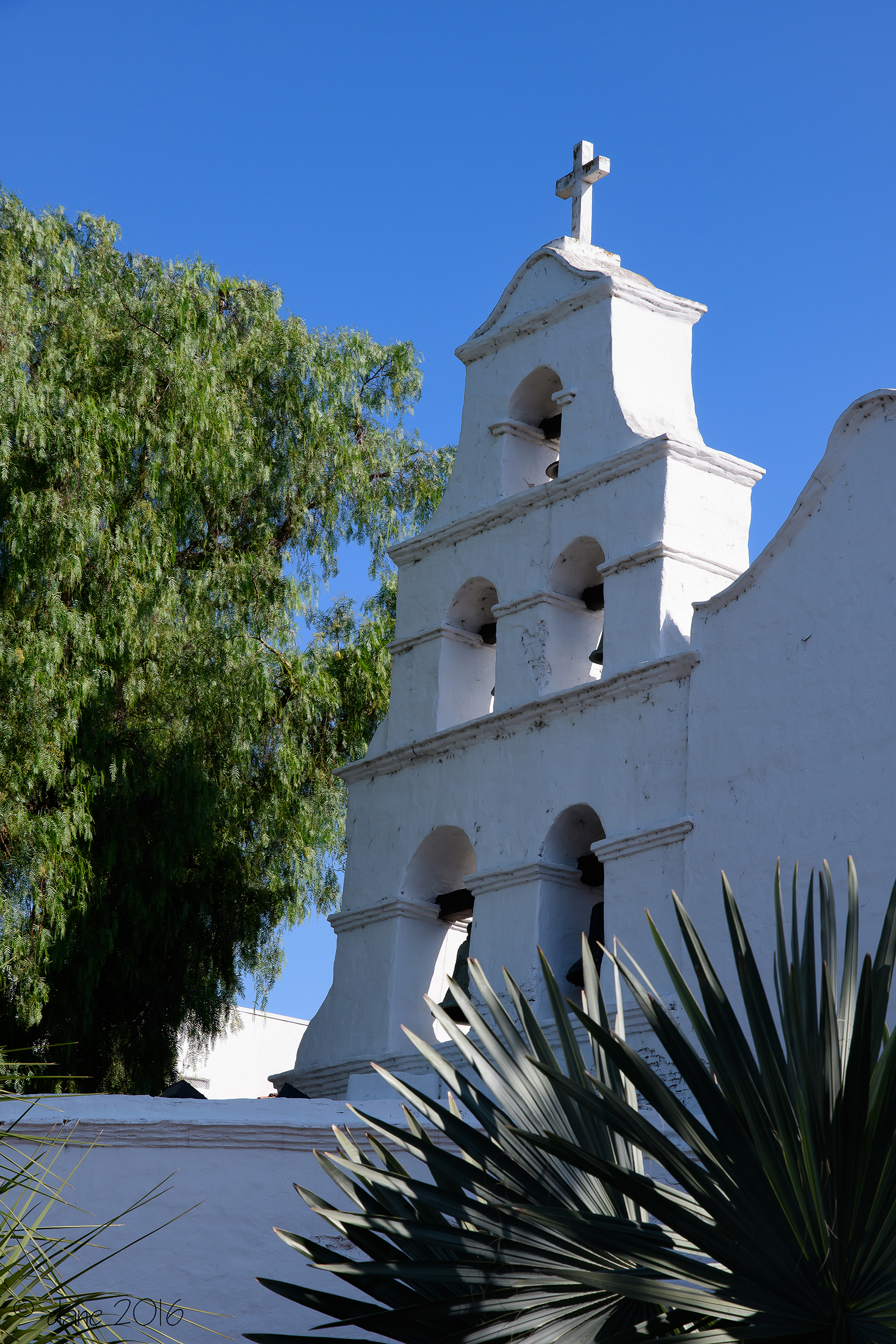Sanctuary - Mission Santa Barbara
These images reflect the personal impact these old sites have for me. My goal is to eventually visit all twenty one missions along El Camino Real. Some of the photos are purely documentary, others will hopefully inspire a reflection on the remarkable history behind the sites. The missions are an enduring testimonial to the faith, persistence and suffering of the people that built them. The Golden Age of California Missions lasted from 1769 to 1834.
The missions are a spiritual and physical memorial to the peoples of California. Their history is both brutal and glorious and reflects the complexity that accompanies periods of seismic cultural change. For Fr. Junípero Serra and his Franciscans, the Age of Missions was an opportunity to bring souls to God. And although their evangelization effort was frequently uninformed and naive, I think it was mostly genuine and even divinely inspired. For the government and soldiers of New Spain, it was necessary to protect remote Alta California from incursions of Russian and English traders and settlers. The soldiers could be less charitable than the clergy they accompanied and frequently treated the natives with contempt and brutality. The indigenous peoples suffered profoundly, their culture and ways of life quickly destroyed as the New World overran the old.
Fr. Serra was the spiritual and political force that drove the entire mission enterprise. But all of the grand mission buildings we see today were completed after his death in 1784. The present buildings reflect over 200 years of decay and numerous restoration projects, some of which was done with little regard for historic accuracy or preservation of priceless works of art. More recent restoration efforts have focused on renewing and maintaining the original architectural design and appearance of the structures.
There’s a tendency either to romanticize the missions or to condemn them through a revisionist reading of their history; the reality is certainly more complex. The missions are a memorial to all the souls that were part of their founding, flourishing, decay and resurrection. These people – each and every one – made possible the remarkable design and construction of the missions, the agricultural enterprise, and the artistic innovation that helped define the Golden Age of the California Missions. The impact of their lives continues to shape California to this day.
“All were pioneers, who bore the burden and the heat of the day, as well as the solitude of the night. A few were outstanding. Many were merely successful. All tried, and a few were failures. Each one deserves the niche in history he earned.”
Fr. Maynard Geiger, O.F.M.
MISSION SANTA BARBARA - Santa Barbara, California
Founded on December 4, 1786, Mission Santa Barbara is the tenth mission established along the Camino Real. It was built about one and a half miles up the hill from the Santa Barbara presidio. The stone church was constructed between 1815 and 1820 with a neoclassical design based on an illustration in a Roman design book found in the mission library.
When I visited, the church was covered with scaffolding during a renovation project. So there are no images here of the beautiful twin bell tower facade. Neighborhood residential development, parking lots and other new construction has covered over many of the old buildings. Numerous earthquakes have also taken their toll. But restoration has always been carefully and lovingly done and the church and convent buildings have survived, although much rebuilt.
The patron saint, Saint Barbara was a third century Christian who, according to legend, was beheaded for her faith by her own father. Her Feast Day is December 4th, the day Mission Santa Barbara was founded.
Mission Santa Barbara is the only mission continuously operated by the Franciscans since its founding. It is an active Catholic parish of the Archdiocese of Los Angeles.
MISSION SANTA YNEZ - Solvang, California
Mission Santa Inés lies about 160 miles northwest of Los Angeles. It is the nineteenth of twenty-one California Missions established by Franciscan priests and Spanish soldiers. Founded on September 17, 1804, it is named in honor of Saint Agnes, an early Christian martyr of the fourth century. The mission site is midway between Mission Santa Barbara and Mission La Purísima Concepción, and was designed to serve the Chumash Indians living east of the Coast Range.
Saint Agnes (Santa Inés) was a young Roman girl who accepted Christianity early in life. She rebuffed the marriage proposal of the son of a Roman governor, stating that she had dedicated her life and heart to Jesus. In 304 AD she was beheaded, and became one of the most honored of the early Roman martyrs. Her statue, circa 18th Century, is located in a niche above the main altar of the mission.
Much of the original church was destroyed in the Great Santa Barbara earthquake on December 21, 1812. The church was rebuilt with 5-to-6-foot-thick adobe brick walls and great pine beams brought from nearby Figueroa Mountain and was re-dedicated on July 4, 1817.
The mission survived through tumultuous periods of Indian revolts, earthquakes, secularization by the Mexican government, abandonment, and plain old physical deterioration. In spite of the hardships, restoration of the mission continues to this day, and Santa Inés remains an active parish in the Archdiocese of Los Angeles faithfully serving the souls of the Santa Ynez Valley.
MISSION SAN GABRIEL - San Gabriel, California
Mission San Gabriel Arcángel was founded September 8, 1771. It is the fourth of twenty one missions of Alta California. Its patron saint is Gabriel, Holy Prince of Archangles.
It was located on fertile lands that helped make it one of the wealthiest and most productive missions. Crops included wheat, corn, beans and the largest winery in California. Its economic success was a catalyst for the development of the pueblo that ultimately grew into modern Los Angeles.
The architecture of Mission San Gabriel is unique, with narrow windows and Moorish-style exterior columns inspired by a cathedral and former mosque in Córdoba, Spain. The construction was completed in 1805. Much of the church was damaged in the earthquake of 1812, including the collapse of the original bell wall. The present six-bell espadańa was added during restoration work in 1827. The oldest bells were cast in Mexico City and date to 1795 The largest bell weighs around one ton and dates from 1830.
Its congregation never abandoned the mission in spite of secularization by the Mexican government in 1834. The pulpit, main altar and its screens and statues are all original. The copper baptismal font from 1771 is still being used today. The mission is an active parish in the Archdiocese of Los Angeles and continues its almost 250 year legacy of caring for souls of the San Gabriel Valley.
SAN DIEGO DE ALCALÁ - San Diego, California
On July 16, 1769 Fr. Junipero Serra raised the cross, said Mass at the site chosen for the chapel and formally founded Mission San Diego de Alcalá on a hill overlooking the bay. It was the first of twenty one missions that would eventually be established in the Spanish empire of Alta California. Resistance from the local Tipai people began almost immediately, leaving a number of dead on both sides just weeks after the mission was established.
In 1774, the mission was relocated to its present location about six miles northeast of the original site. By 1808 the population reached fifteen hundred and the construction of a new, larger church – the third one on the present site – was begun. In 1811 cracks in the church roof developed and the two buttresses at the front entrance were added to provide additional structural support. The church was completed around 1813.
From 1777 through the early years of the 1820’s, the mission grew but was never considered among the most prosperous of the California missions. It was quickly abandoned during the secularization of the missions by Mexico, and the arrival of Americans following California statehood only accelerated the neglect of the mission – distained as a foreign relic of a bygone culture. By the late 19th century, all that remained of the church was its façade, the two buttresses, the base of the bell tower, the baptistery arch, and one room of the convento (the priest's residence).
The turn of the century brought a revival of interest in the history of the missions and early Spanish culture of Alta California. Restoration of the church in 1931 followed contemporary standards of historical accuracy and, whenever possible, used materials identical or similar to the original structure of 1813. Although it’s mostly a reconstruction, today’s church, both exterior and interior, represents as close as possible the dimensions and appearance of the original 1813 building.














































